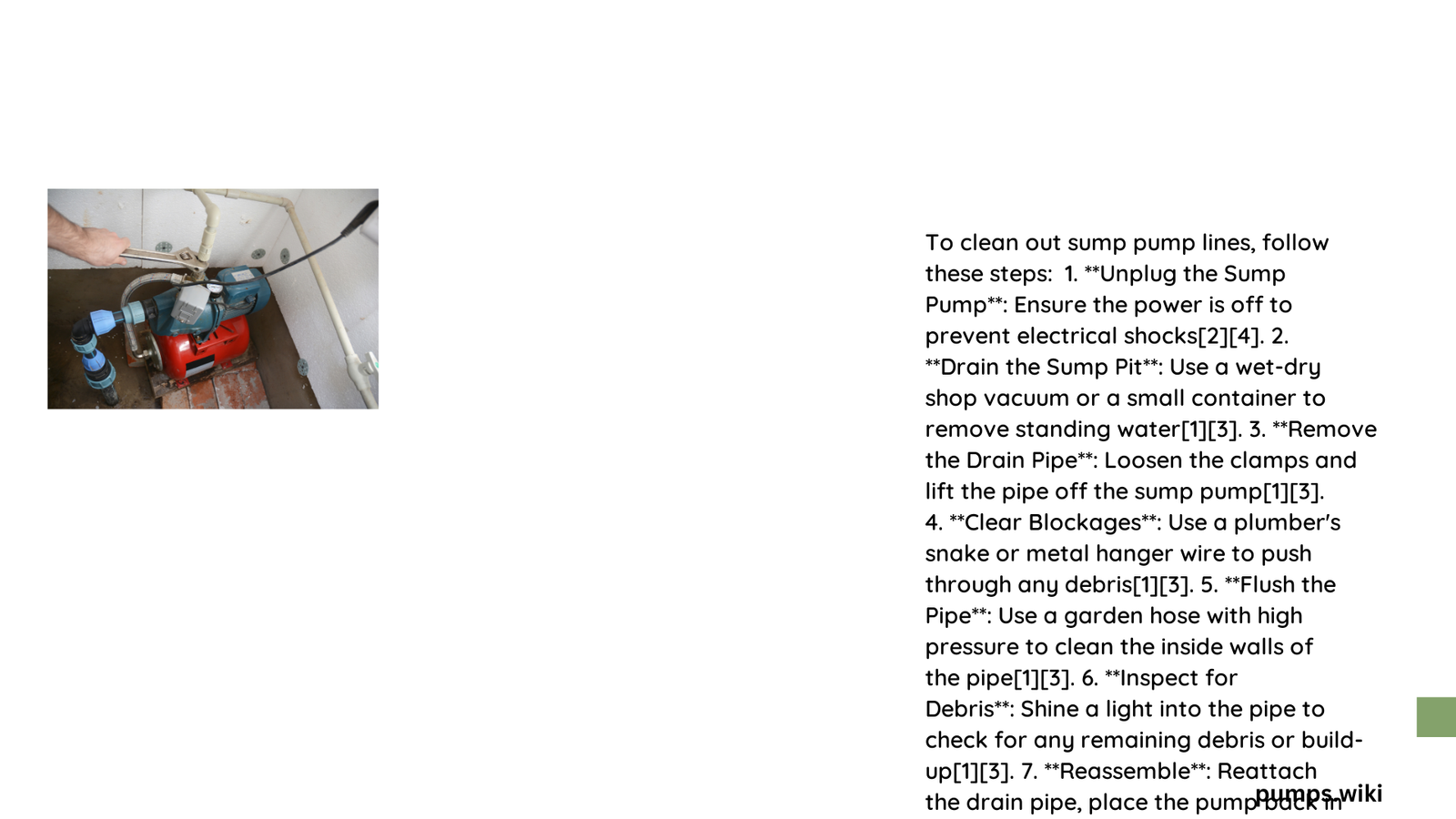Maintaining clean sump pump lines is crucial for preventing water damage and ensuring efficient drainage in your home. Accumulated debris, sediment, and potential blockages can compromise your sump pump’s performance, leading to potential flooding and costly repairs. This comprehensive guide will walk you through professional techniques to clean out sump pump lines, protect your property, and extend the lifespan of your drainage system.
Why Do Sump Pump Lines Need Cleaning?
Sump pump lines can accumulate various types of debris over time, including:
- Sediment and mineral deposits
- Organic matter like leaves and twigs
- Lint and small particles
- Potential bacterial or algae growth
What Tools Do You Need for Cleaning?
| Tool | Purpose | Recommended Type |
|---|---|---|
| Garden Hose | Rinsing and flushing | Flexible, medium-pressure |
| Wet/Dry Vacuum | Removing standing water | Industrial-grade |
| Wire Brush | Scraping debris | Stiff-bristled |
| Bucket | Collecting water/debris | Large, sturdy |
| Vinegar Solution | Natural cleaning agent | 1:1 water ratio |
How to Prepare for Sump Pump Line Cleaning?

Before beginning the cleaning process, follow these critical preparation steps:
- Safety First
- Disconnect electrical power to the sump pump
- Wear protective rubber gloves
-
Ensure proper ventilation in the work area
-
Initial Inspection
- Check for visible damage or wear
- Assess the current condition of pipes and connections
- Note any unusual odors or discoloration
What Are the Step-by-Step Cleaning Techniques?
Drain and Disconnect Process
- Remove the sump pump from the pit carefully
- Place the pump on a clean tarp or plastic sheet
- Disconnect the discharge pipe from the check valve
- Prepare a collection bucket for water and debris
Cleaning Methodology
- Use a garden hose to flush the discharge line
- Apply a vinegar-water solution for natural descaling
- Scrub stubborn debris with a wire brush
- Rinse thoroughly with clean water
- Use a wet/dry vacuum to remove remaining moisture
How Often Should You Clean Sump Pump Lines?
Recommended cleaning frequencies:
- Moderate Climate: Annually
- High Rainfall Areas: Twice per year
- Coastal/Humid Regions: Quarterly
- After Major Storms: Immediate inspection recommended
What Are Common Challenges During Cleaning?
Potential issues to watch for:
- Mineral buildup blocking pipe flow
- Cracked or damaged discharge lines
- Improper slope causing water retention
- Roots or organic matter intrusion
Pro Tips for Maintenance
- Install a debris filter at the discharge point
- Use biodegradable cleaning solutions
- Maintain proper pipe slope
- Consider professional annual inspections
- Keep detailed maintenance records
Warning Signs of Blocked Sump Pump Lines
Immediate Action Required If You Notice:
– Slow water drainage
– Unusual pump sounds
– Water pooling around discharge area
– Increased pump cycling frequency
Cost Considerations
| Maintenance Level | Estimated Annual Cost |
|---|---|
| DIY Basic Cleaning | $20 – $50 |
| Professional Inspection | $100 – $250 |
| Emergency Repairs | $500 – $2,000 |
Conclusion
Regular maintenance and proactive cleaning of sump pump lines are essential for preventing water damage and ensuring long-term system reliability. By following these professional techniques, homeowners can protect their property and maintain an efficient drainage system.
Remember: Prevention is always more cost-effective than emergency repairs.
